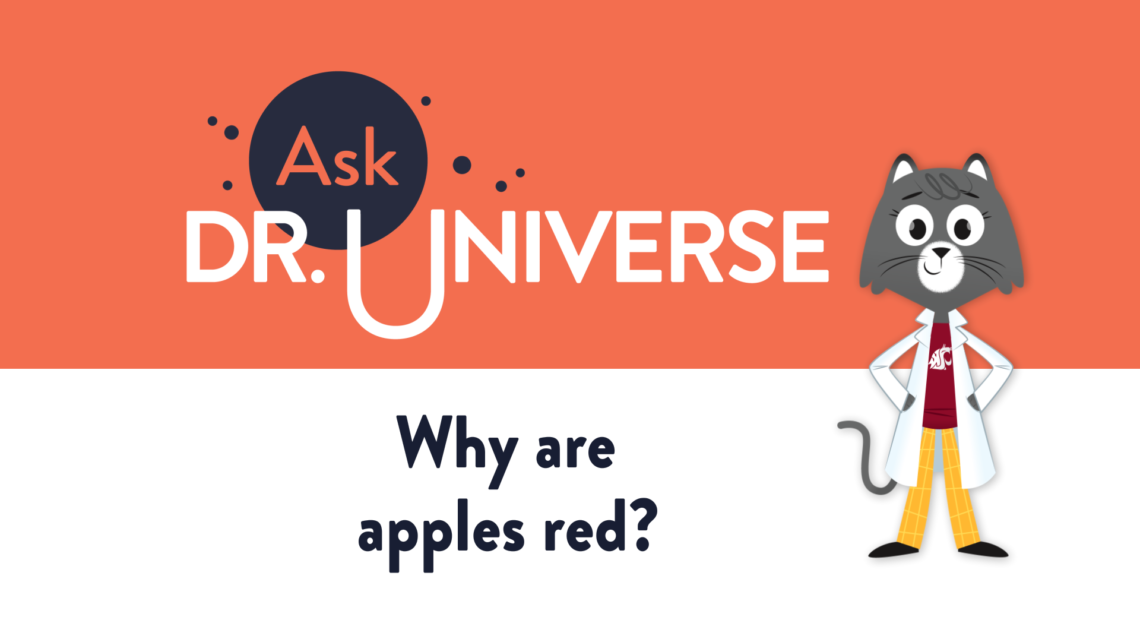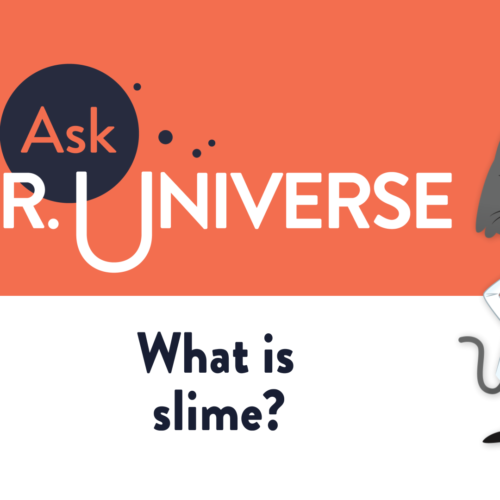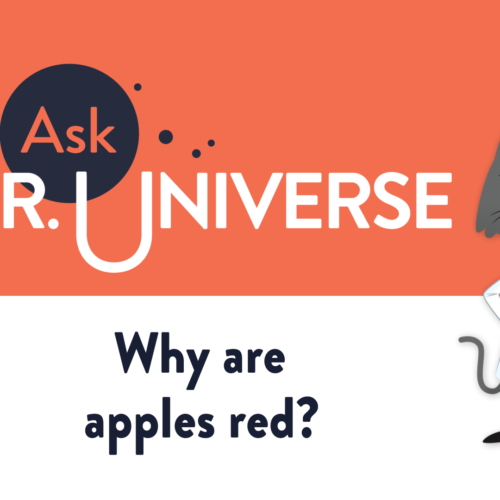Why Are Apples Red?

Ask Dr. Universe
Learn More
Dear Emily,
Just the other day I was biting into a crunchy, delicious red apple when I was reminded of your question. I started wondering why apples are red, too.
I called up my friend and apple expert Kate Evans, a scientist here at Washington State University. Her research helps us develop new kinds of apples.
Before she answered your question, she had a question for us to wonder about, too.
“What might the benefit be for a tree to have red fruit?” she asked. I thought about it for a moment. Then I remembered that in nature, colors could sometimes help send a message to plants and animals.
The message might be “Don’t eat me,” as is the case of some brightly colored poisonous frogs. Other times it might be a chameleon using its colors to attract a mate, like saying “Look over here!”
Evans explained that the apple’s red color might just be a way of telling hungry animals, “We are delicious.”
Long before humans were shopping for apples at the supermarket, bears were scavenging for the fruit in forests. Bears have a good sense of smell and pretty good vision that helps them look for food. One idea is that bears are particularly attracted to red, a color that really pops.
“A red apple is kind of a pretty, attractive, easy-to-see piece of fruit, especially against the green leaves,” Evans said.
When bears see the red fruit, they eat it, digest it, and poop out the seeds. In fact, Evans said, the point of the tree having fruit at all is to help the tree spread its seeds. That way new generations of trees can grow.
Of course, you may have noticed that not all apples are red. Some are yellow, pink, or green. Red apples get their color from anthocyanins. These are pigments, or natural colorings, that develop as the apple grows. We also find these pigments in cranberries, raspberries, cherries, cabbage, and other red or purple foods.
Whether you are on four legs or two, the red color can be really appealing, Evans said. A lot of humans like to eat red apples, too. Here in Washington State, we produce more than 2 million tons of apples each year, far more than any other state.
Another way to think about the answer to your question may be to look at how we see different colors. When we look at a red apple, it’s absorbing colors from the sunlight. It absorbs all the colors of the rainbow—except for red. The red light reflects off the apple and our brain and eyes work together to let us know what color we are seeing.
Red is a color that can be appealing to both humans and other animals. It’s also one of my favorite fall colors. To celebrate the season, I’m off to pick some red apples and press them into delicious cider.
Sincerely,
Dr. Universe
Full Transcript
– [Narrator] Hey cool cats, I’m Dr. Universe. Here to answer your baffling science questions. Like this one. Dear Dr. Universe why are apples red? In nature different colors sometimes send a message to different plants and animals. The message might be don’t eat me as is the case of some brightly colored poisonous frogs. Other times it might be a chameleon using it’s colors to attract a mate saying hey look over here. But scientists think the apples red color might just be a way of telling hungry animals we’re delicious. Long before humans were shopping for apples at the supermarket bears were scavenging for fruit in forests. One idea is that bears are particularly attracted to red. A color that really pops against green leaves. When bears see the red fruit they eat it digest it and poop out the seeds. That way new generations of trees can grow and produce even more apples. Send me a science question of your own at AskDrUniverse.wsu.edu.












